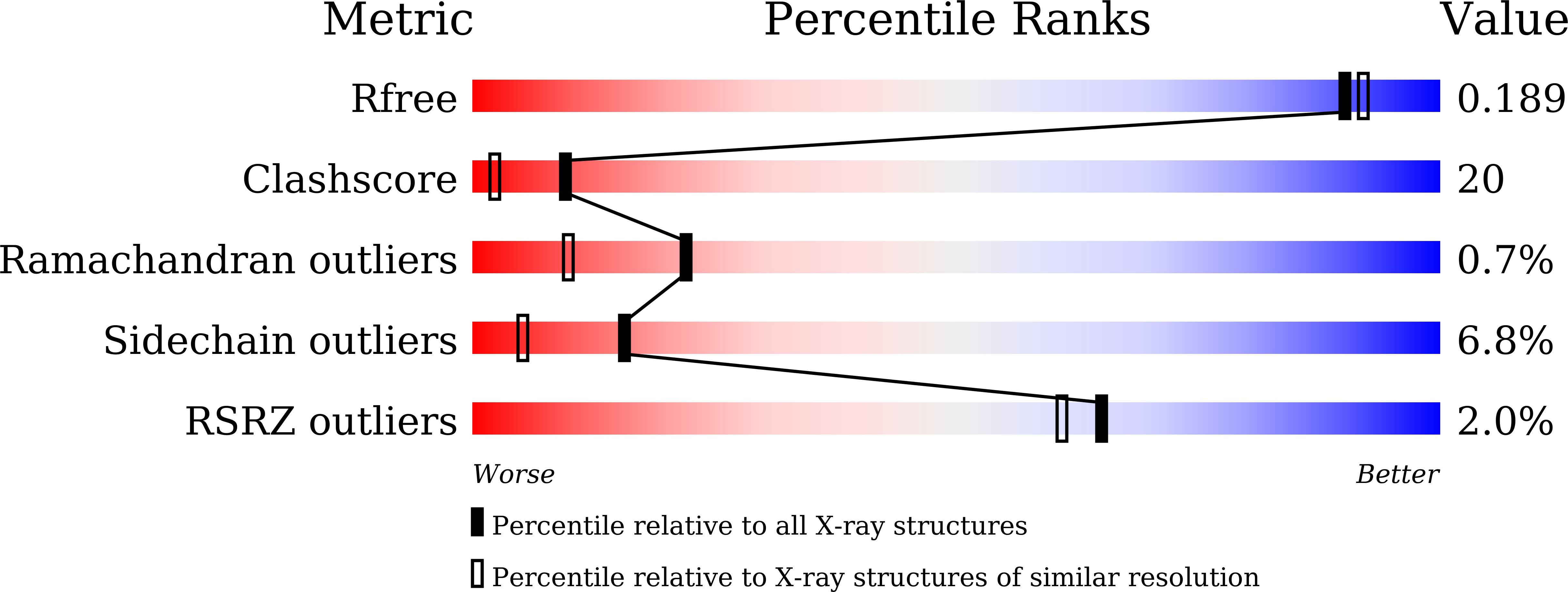Structural Analysis of an l-Cysteine Desulfurase from an Ssp DNA Phosphorothioation System.
Liu, L., Jiang, S., Xing, M., Chen, C., Lai, C., Li, N., Liu, G., Wu, D., Gao, H., Hong, L., Tan, P., Chen, S., Deng, Z., Wu, G., Wang, L.(2020) mBio 11
- PubMed: 32345643
- DOI: https://doi.org/10.1128/mBio.00488-20
- Primary Citation of Related Structures:
6M4J - PubMed Abstract:
DNA phosphorothioate (PT) modification, in which the nonbridging oxygen in the sugar-phosphate backbone is substituted by sulfur, is catalyzed by DndABCDE or SspABCD in a double-stranded or single-stranded manner, respectively. In Dnd and Ssp systems, mobilization of sulfur in PT formation starts with the activation of the sulfur atom of cysteine catalyzed by the DndA and SspA cysteine desulfurases, respectively. Despite playing the same biochemical role, SspA cannot be functionally replaced by DndA, indicating its unique physiological properties. In this study, we solved the crystal structure of Vibrio cyclitrophicus SspA in complex with its natural substrate, cysteine, and cofactor, pyridoxal phosphate (PLP), at a resolution of 1.80 Å. Our solved structure revealed the molecular mechanism that SspA employs to recognize its cysteine substrate and PLP cofactor, suggesting a common binding mode shared by cysteine desulfurases. In addition, although the distance between the catalytic Cys314 and the substrate cysteine is 8.9 Å, which is too far for direct interaction, our structural modeling and biochemical analysis revealed a conformational change in the active site region toward the cysteine substrate to move them close to each other to facilitate the nucleophilic attack. Finally, the pulldown analysis showed that SspA could form a complex with SspD, an ATP pyrophosphatase, suggesting that SspD might potentially accept the activated sulfur atom directly from SspA, providing further insights into the biochemical pathway of Ssp-mediated PT modification. IMPORTANCE Apart from its roles in Fe-S cluster assembly, tRNA thiolation, and sulfur-containing cofactor biosynthesis, cysteine desulfurase serves as a sulfur donor in the DNA PT modification, in which a sulfur atom substitutes a nonbridging oxygen in the DNA phosphodiester backbone. The initial sulfur mobilization from l-cysteine is catalyzed by the SspA cysteine desulfurase in the SspABCD-mediated DNA PT modification system. By determining the crystal structure of SspA, the study presents the molecular mechanism that SspA employs to recognize its cysteine substrate and PLP cofactor. To overcome the long distance (8.9 Å) between the catalytic Cys314 and the cysteine substrate, a conformational change occurs to bring Cys314 to the vicinity of the substrate, allowing for nucleophilic attack.
Organizational Affiliation:
State Key Laboratory of Microbial Metabolism, School of Life Sciences and Biotechnology, Joint International Research Laboratory of Metabolic & Developmental Sciences, Shanghai Jiao Tong University, Shanghai, China.
















